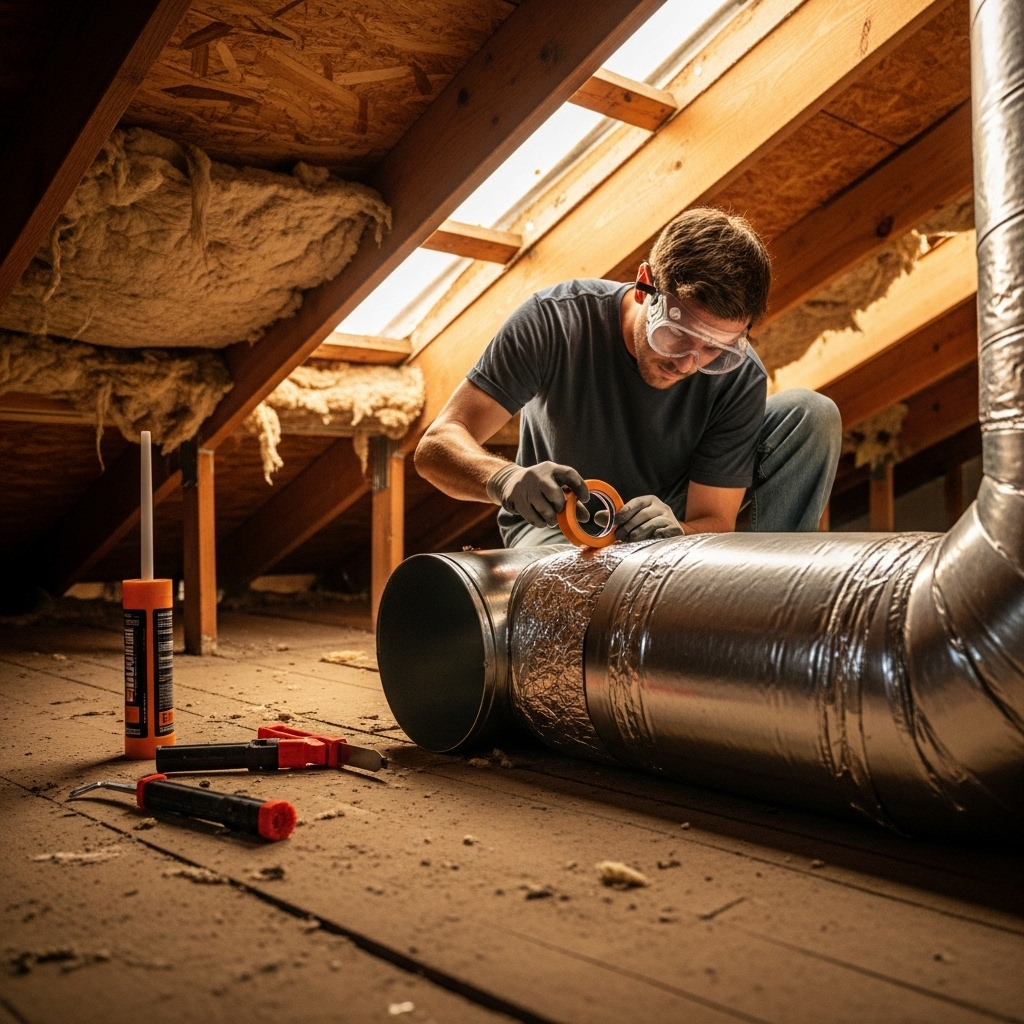Beverly Hills living comes with a rhythm all its own: fog-soft mornings, midday sparkle on the water, eucalyptus breezes at dusk, and, a few times each year, hot winds that remind us why preparation matters. The same climate and lifestyle that make this place so appealing also shape how our HVAC systems age and how we should care for them. Over years of working in homes from Broad Beach to the upper canyons, I have learned that the smartest maintenance plans are the ones tuned to Beverly Hills’s microclimates and seasons. When it comes to clean, healthy air and steady comfort, a thoughtful approach to air duct cleaning and routine upkeep pays off every single day.
Start with an Honest Baseline
Before you can set a schedule, you need to understand the current condition of your ductwork and air handler. A baseline inspection with visual documentation—photos from key supply runs, the return plenum, and the blower section—gives you something to measure progress against. In Beverly Hills, it is common to find a mosaic of dust sources: salt crystals near beach zones, fine canyon dust from footpaths and landscaping, pet hair in family rooms, and, during and after fire season, a film of soot that gives registers a faint gray shadow. Knowing which of these dominates your system shapes the cleaning strategy and the timeline for follow-up.
Do not underestimate the value of simple observations. If a quick wipe inside a return grill leaves a dark streak, if you notice a smoky note each time the fan starts, or if supply vents rattle with a slightly rough tone, those signals often correlate with debris buildup. A good baseline means fewer surprises and clearer priorities.
Match Maintenance to Beverly Hills’s Seasons
Our year divides neatly into a few HVAC chapters. Spring brings marine layer moisture, summer invites open windows and heavy salt air, fall can deliver Santa Ana winds and smoke, and winter cools the canyons. Aligning your maintenance with those shifts makes your efforts go further. Consider a pre-summer cleaning to remove spring’s damp dust and prepare for higher airflow, then reassess in late fall once the risk of smoke has passed. If a significant wildfire event touches the area, move the schedule up and treat that as a reset point.
Homes at elevation or deep in a canyon often experience stronger winds and more dust infiltration; beachfront homes see more salt and sand. Tailor your timing accordingly. What matters most is consistency and responsiveness to real conditions rather than rigid calendar dates.
Filtration: The Everyday Guardrail
Cleaning clears the runway; filtration keeps it clear. In Beverly Hills, where fine particles and salt mix with everyday house dust, choosing a filter that your system can handle comfortably is crucial. A higher MERV rating captures more, but only if your blower is designed for the added resistance. The right match keeps duct surfaces cleaner between services and reduces the chance that smoke particles will find a home inside the system.
During smoky weeks, step up the cadence on filter checks. What looks clean at a glance may be loaded with fine particles that do not show as easily. A fresh filter after a wind-driven smoke day can mean the difference between a system that rebounds quickly and one that carries a smoky note for weeks.
Seal the Obvious, Verify the Hidden
Even the best cleaning will not hold if your returns are drawing air from places they should not. In older Beverly Hills homes, return plenums and attic transitions sometimes have gaps that invite dusty attic air into the system. Sealing those points reduces the background load and makes every subsequent cleaning more effective. Likewise, ensure supply boots are snug to the ceiling or floor to prevent dust lines at registers and keep conditioned air where you want it.
If you suspect larger leakage issues—uneven room airflow, hot or cold spots, or visible dust streaks forming around registers—consider asking for a pressure test or a focused inspection of suspect runs. A small repair today often prevents a persistent comfort complaint later.
Address the Air Handler, Not Just the Ducts
Many homeowners focus on the visible parts of the system—the vents and the ductwork—while the air handler quietly collects the same dust load. A comprehensive service includes inspection and cleaning of the blower compartment, attention to the evaporator coil housing, and a check on the condensate line. Beverly Hills’s humidity swings, particularly during marine layer days, can encourage films on these surfaces that trap more dust. Clearing them at the same time you clear the ducts helps the entire system feel renewed.
Listen for changes after service. A smoother ramp-up, a quieter run, and more even airflow are subtle but reliable signs that the work was comprehensive. If the system still sounds strained or certain rooms lag, ask for a follow-up assessment of balancing and leakage—the goal is a home that feels calm and even in every room.
Post-Cleaning Habits that Make a Difference
Once your ducts are clear, small habits keep them that way. Keep return areas uncluttered so the system can breathe, vacuum registers gently during regular cleaning, and do a quick visual check after windy days to make sure no debris has caught in the grills. In busy households, pet hair and the occasional craft glitter can build up faster than you think. Setting a calendar reminder for seasonal filter checks makes it easier to stay ahead of changes you cannot see.
When wildfire smoke is in the forecast, shift to protective mode. Close windows, run the system on recirculate, and resist the urge for late-night cross-breezes until the air outside improves. Your ducts will thank you, and you will save yourself from a preventable post-event cleanup.
Renovations, Rentals, and Second Homes
Beverly Hills homes often evolve. A new kitchen, a studio over the garage, a reimagined great room—beautiful changes that stir up a surprising amount of fine debris. If you have renovated, schedule a duct cleaning after final sanding and punch-list tasks. Drywall dust and sawdust find their way into returns even with careful containment. Starting fresh protects finishes and keeps that new-home feel from being overshadowed by a persistent fine film on surfaces.
For second homes and short-term rentals, a different pattern applies. Vacant periods let air sit still, which can intensify odors once the system turns on. A quick service before peak occupancy keeps first impressions positive. Guests will not mention clean ducts in a review, but they will notice a space that smells like ocean and cedar, not last season’s smoke.
What “Best Practices” Look Like on the Day
On service day, expect protective coverings, careful removal of registers, agitation of supply and return runs to lift debris, and high-efficiency capture so the dust does not escape into the living space. The technician should walk you through findings and, where helpful, show photos from inside the system. A fresh filter goes in last, chosen for your specific equipment and home needs.
If you have access concerns—tight mechanical closets, steep roofs, or limited attic space—discuss them ahead of time. Beverly Hills’s architecture can be dramatic, and a bit of planning keeps the work efficient and respectful of your home.
When to Call Between Scheduled Visits
Schedules are guides, not rules. If you notice a smoky odor reappearing after a windy week, if certain rooms begin to feel sluggish, or if dust lines form around supply grills, that is your cue to move the next visit up. Similarly, after a significant regional fire—even if the flames stay far from Beverly Hills—the fine particulates that ride the wind may justify a quicker check-in. Responding to real conditions is the essence of best practices here.
In years when fire activity is low, you may find your system holds its cleanliness longer, especially with attentive filtration. Celebrate those easy years, but keep your baseline inspection photos handy so you can compare and decide with confidence when it is time again.
FAQ
Q: How often should Beverly Hills homeowners schedule duct cleaning?
A: It varies. Beachfront homes with frequent open windows and canyon homes with strong winds may benefit from more frequent service. A common pattern is every couple of years, adjusted sooner after smoke events or renovations and later when conditions are mild.
Q: Do I need to leave the house during the service?
A: Typically, no. With proper containment and equipment, the process is clean and controlled. If you are sensitive to noise or have a home office schedule, you may prefer to pick a quiet time of day.
Q: Will cleaning fix uneven temperatures in my home?
A: It can help by reducing resistance and restoring airflow, but persistent imbalances may point to duct design, leakage, or damper settings. A good technician will flag those issues and suggest next steps.
Q: What filter should I use after cleaning?
A: Choose a filter that your system can handle comfortably. Many Beverly Hills homes do well with a higher-efficiency option during wildfire season, provided the blower is sized for it. Ask for a recommendation based on your equipment model.
Q: Is there anything I should do the day after service?
A: Run the system normally and pay attention to how it feels. If odors persist or airflow seems inconsistent, reach out for a quick check—sometimes a damper tweak or a second pass at a stubborn run finishes the job.
Bring Beverly Hills Air Home, the Way It Should Be
The best maintenance plans are quiet and confident. When the seasons shift, your home stays calm; when winds rise, your air stays clear. If you are ready to align your routine with Beverly Hills’s rhythm, consider booking a mid-season tune that includes thoughtful air duct cleaning. It is the simplest way to keep the feeling you love about this place flowing through every room.

